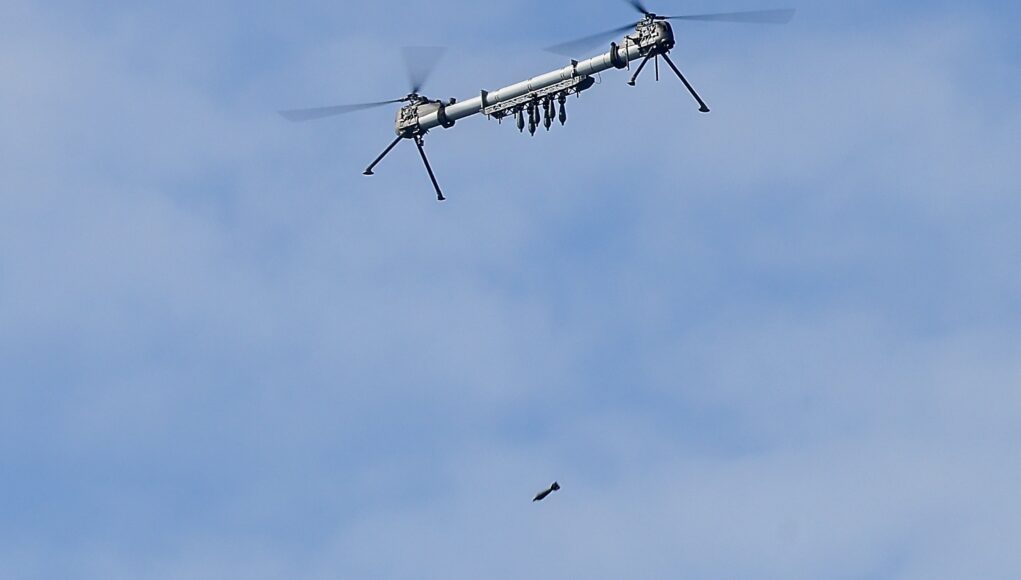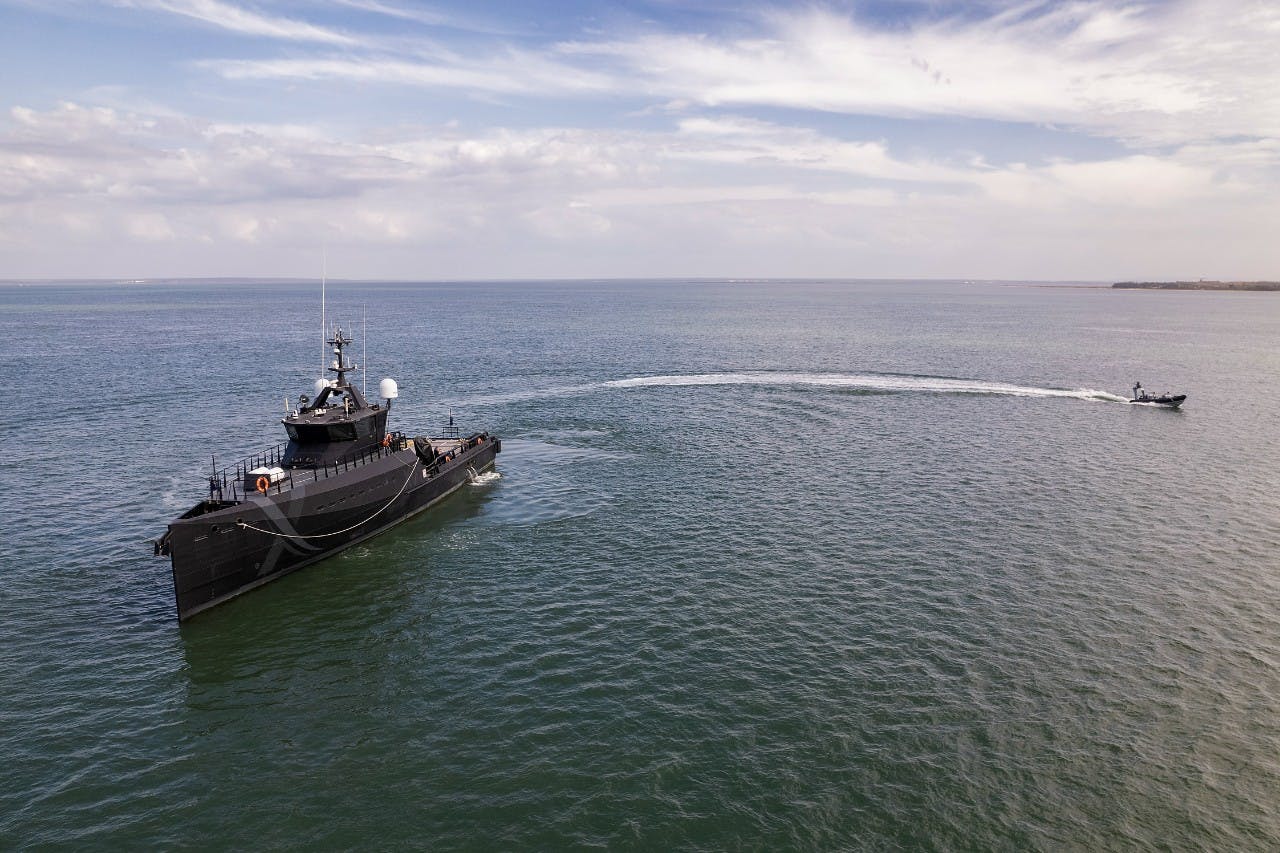A drone has successfully ‘dropped bombs’ on the Royal Navy’s experimental vessel, XV Patrick Blackett, as part of the uncrewed systems training exercise REPMUS24 in Portugal.
The event saw the drone, UAV Rotron, conduct an artificial bomb drop on the ship, showcasing the latest advancements in autonomous warfare technology.
The exercise, held in Troia, southern Portugal, involved personnel from 27 nations, including the UK, and was designed to test and integrate cutting-edge drone and uncrewed vessel technologies into operational task groups. The Royal Navy deployed a wide range of uncrewed systems, including hand-launched drones, surveillance drones, mini quadcopters, and uncrewed Pacific 24 boats.
The REPMUS (Robotic Experimentation and Prototyping Maritime Uncrewed Systems) exercise serves as NATO’s annual event for testing and pushing the limits of autonomous systems. The Royal Navy’s XV Patrick Blackett acted as a testbed for these technologies, building on its successes from last year’s trials. The experimental vessel is used by the Royal Navy as a platform to trial new technologies, including unmanned underwater and surface vehicles, as well as quantum navigation.
The exercise also saw the Royal Navy test various drones, such as the uncrewed aerial vehicle Peregrine, surveillance drones Puma and Ebee Vision, and the remote-piloted seaboat. The Navy’s Office for Chief Technology Officer (OCTO) introduced NavyPODS—special shipping containers that serve as operations rooms, storage spaces, and command centres for the drones.
REPMUS24 is not only a critical training exercise but also a contributor to progress under AUKUS, the defence and security partnership between the UK, Australia, and the United States. The uncrewed wargames allow NATO and its allies to test emerging technologies that could enhance future military operations, with a focus on integrating autonomous systems into existing fleets.















My dad used to work on Belvederes. Reminds me of one of them
Reminds me of those tiny 20lb bombs dropped in WW1 by Strutters, Camels et. al. Still 20lb in 1917 and 20lb in 2024, big difference in explosive power; I could foresee these being incendiary fire-starters etc.
Perhaps mortar bombs?
It’s hard to tell how big the drone is but a 60 or 81mm mortar bomb might be a reasonable payload.
Don’t bother wasting millions in R&D, just ask Ukraine to show us what they are doing. They have sunk three warships, destroyed thousands of tanks and IFV’s using drones. They are set to produce over 5 million this year.
Once the war is over, Ukraine will replace China in drone tech.
Might be worth plugging into Poland too. They are the fastest growing economy in the West gaining an exceptional electronic and technology sector, are building a substantial military with support and production capabilities are closely related to Ukraine and by some measures of GDP will overtake Britain around 2030. Massive opportunities that will once the war is over inevitably spill over into Ukraine.
FairPlay to Poland we can move there
They’re really not….
https://cebr.com/blogs/claims-that-poland-will-be-richer-than-the-uk-this-decade-are-overambitious-but-only-just/
This looks a lot like one of the drainpipe drones that Ukraine has brought into service recently. I don’t know if it’s exactly the same design, but the layout is there.
“Once the war is over, Ukraine will replace China in drone tech.
They won’t.
Because they’d need to make all the components….and they’re all from China or the West.
They’re also far, far behind on autonomy in UGV or USV/UUV and large unmanned aircraft like MQ-9 is far beyond their abilities…
Do they have some interesting winged UAV? Yes….but in cost terms and capability existing Western UAV are competitive.
So you’re left with FPV….and thats not about construction, components or tech…its about use and training.